The business benefits of water recycling
Investing in a water recycling system has the dual benefit of reducing costs and expanding revenue. Many industries use large amounts of water during operational and site activities, which can be wasteful and environmentally damaging. Water recycling systems offer companies an opportunity to reduce water related expenses, as well as market their services to environmentally conscious customers.
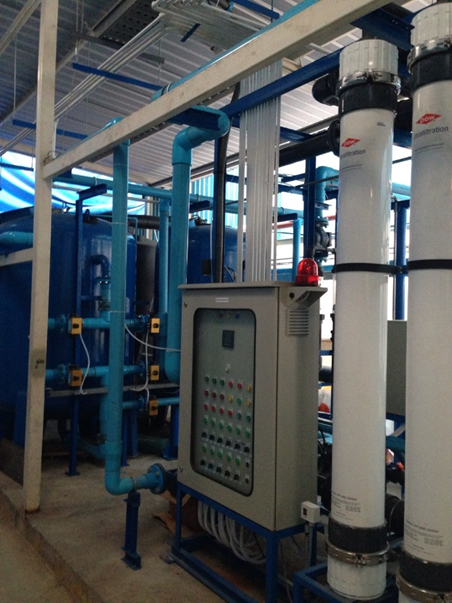
UNITECH is dedicated to helping you recycle and harvest water. To keep your business efficient and compliant, learn more about our leading water recycling solutions.
Water recycling is the process of treating waste water and reusing it. Recycled water can be reused for the same process, for irrigation or as an alternative to mains water in wash-down applications. Water recycling systems will vary according to the quality of waste water to be treated and the intended application for the water.
The process may involve the use of an oil and water separator, a filtration system, a detergent removal unit and a sanitation unit. UNITECH TEAM will discuss your specific business needs with you and find the best system to suit these requirements.
Key Features of Cleanawater Water Recycling Systems
- AQIS compliant technology
- Retrofit wash bays for AQIS compliant upgrades
- Local Water Authority compliant systems
- Track flow rates, pH levels, usage statistics and storage levels
- Equipped with controllers, alarms, sensors and switches to alert you immediately of faults
Industry Examples
Example 1: Car Wash
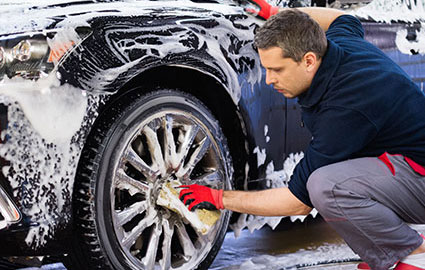
A self-service car wash is looking to implement a water recycling system. The business primarily wants to reduce mains water expenses and waste water disposal fees. However, they also recognise the potential marketing advantage of becoming a green and environmentally friendly business.
The car wash operates 24/7 all year around without supervision from operators. It also uses a range of fast breaking detergents as part of the washing process. A solution will need to have a remote alert system, as well as the ability to treat the various detergents and chemicals in the waste water.
Solution
A Cleanawater recycling system comprised of a triple interceptor, oil separator, filtration unit and sanitation unit is an ideal water treatment solution for this business.
The separation of the fast breaking detergents occurs in the triple interceptor. Here the detergents are given time to break, separate, and sink to the bottom. Once detergent has been removed, water is pumped through an oil and water separator where oil and large particles are removed from the water into a waste tank.
The waste water then travels to a filtration unit that filters particles down to 1 micron in size. Upon completing this process, water enters the detergent removal unit where detergents, shampoo, waxes and other cleaning agents are removed.
Finally, water is sterilised in order to make it safe to be used around humans.
As the customer requires an independent system, Cleanawater can also install a number of switches, controllers and alarms that remotely notify headquarters of any issues.
Cleanawaters’ custom solution is cost efficient, functional and complies with all relevant authority requirements. The car wash has now reduced its water related expenses and can now advertise their service as environmentally friendly and attract new customers.
Example 2: Importing goods
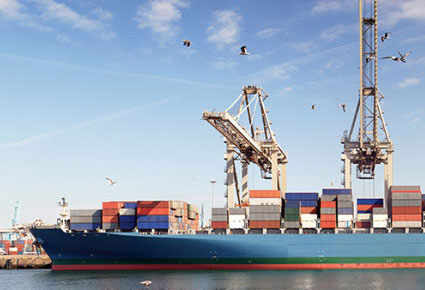
A small international trade business is planning to import goods into Australia from a number of other countries. The goods will be imported in containers and wooden pallets that will need to be washed down according to the Australian Quarantine and Inspection Service (AQIS) and the Department of Agriculture, Fisheries and Forestry (DAFF).
The business will need an AQIS wash down bay so that the goods can be washed down to remove any soil, insects, seeds and other particles that pose as a threat. An AQIS water recycling system will also need to be installed so that water is treated to both Australian Quarantine and local trade waste standards.
Solution
AQIS has strict policies for wash down bay requirements that include splash walls’ height, and cleaning procedures for wash pads and protective clothing.
Some of the DAFF standards for water recycling systems include:
- Filtering organic contaminants to a minimum of 100 microns
- A post-filtration pH between 5.0 and 7.0
- The mechanical agitation of water post-chlorination
- Chlorine levels of at least 200 parts per million
Cleanawater is an industry leader for AQIS compliant water recycling systems. Cleanawater’s solutions can be customised to suit different budgets and flow rate requirements.
How a Water Recycling System Works
The need for a customised solution
Water recycling systems work by taking waste water and treating it until it is suitable for reuse in the intended application. Water recycling systems vary depending on the type of water to be recycled and the requirements of intended application.
Industries that use vast amounts of water will benefit from water recycling systems used in their day to day operation. Depending on the quality of waste water, the number of steps in water recycling system will vary.
In the car wash industry for example, waste water will contain cleaning agents, oil, food scraps and other debris which wash into the pit that collects waste water.
The availability of space to install the water recycling system, and the required flow rate are other contributing factors when designing the best water recycling system for your application.
Water recycling stages
Removing oil and large particles

The first step of water recycling is to remove oil and large particles from the water. This first step is possible thanks to the combined efforts of the triple interceptor and oil separator.
A triple interceptor is a three-compartment tank where water overflows from the first compartment to the second, and then from the second to the third. The main purpose of a triple interceptor is to allow time for any sludge to sink to bottom of the first compartment.
Once waste water has gone through a triple interceptor, it enters the oil and water separator. The fundamental principle behind a water and oil separator is simple physics: since oil is less dense than water it will tend to float to the top of a tank, where it can be collected and removed.
Basic oil and water separators can be broadly divided into three groups:
- Separators that primarily rely on gravity for the separation of oil to occur
- Separators that provide a medium on which oil particles can coalesce
- Separators which apply high centrifugal forces to waste water to separate oil particles
Cleanawater’s expert team will help you determine which oil and water separator is the best fit to your business and waste water requirements.
Filtration
After oil and large solids have been removed, the waste water is deposited into a process tank where it is stored before being pumped into a filtration system tank.
The first stage in the filtration system is a deep bed media filter. This is where water is pushed at high pressure through fine sand and other granular particles in order to remove any large particles still present in the water. To ensure that the required maximum particle size is achieved, water is then put through 3 stage cartridge filtration capable of reducing sediment size to 1 micron.
Removing chemicals
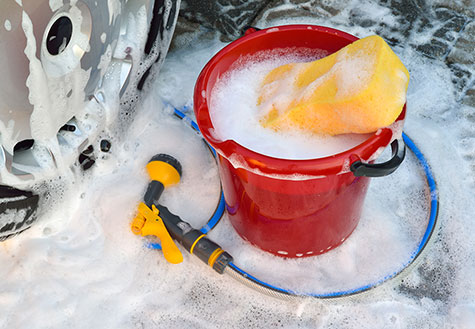
The next step in the water recycling system depends on the presence, type and amount of surfactant in the water. Surfactants are commonly found in detergents. They help wet surfaces more thoroughly by reducing water surface tension.
Detergents work by allowing soil and oily residue to mix with water and be rinsed off easily. The effectiveness of detergents and soaps depends on a number of factors, including water hardness. Water hardness is the measure of calcium, magnesium, iron and manganese ions in water. Calcium and magnesium ions bind to the surfactant and leave an unpleasant residue on water and on surfaces.
To address this residue, substances called builders are added to the water to remove these problematic ions, thus making water soft. The most common builder added to surfactants is phosphate. While phosphate solves the water hardness issue, it creates another problem — phosphate and surfactants don’t degrade in the environment, and are highly toxic for animals and vegetation.
To respond to the need for environmentally friendly detergents, manufacturers have created fast breaking detergents. These detergents lower the water surface tension for a period of time, which allows water and soil to emulsify. After some time has passed, the surface tension returns to normal allowing the separation of water and soil. Biodegradable detergents, which can be broken down by bacteria, have also been introduced.
There are two main ways to remove detergent from water:
- The use of specific chemicals which allow detergent particles join and coagulate
- Treating water in a tank using bacteria to decompose detergent
Cleanawater’s expert water recycling team is experienced in removing a variety of detergents and other cleaning agents from waste water.
Sterilisation
Once water is free of detergents, a sterilisation phase can commence. Waste water is full of pathogens which are disease-causing organisms, viruses, parasites and bacteria that are found in poor quality water.
Although this stage is only required for when recycled water is to be used around humans, it is highly recommended as a standard. Pathogens can cause severe illness if infected water comes in contact with humans.
In a car wash setting for instance, water is sprayed through high pressure hoses to maximise water saving, but this means that mist can travel long distances and the risk of harmful water coming in contact with a person increases.
There are two ways of sterilising water:
- Chlorine sterilisation is achieved by adding and maintaining a concentration of Chlorine to the water. It is ideal for when water is to be stored and reused in the future.
- UV steralisation is achieved by running water under UV light rays. This disrupts pathogens’ cellular functioning and is ideal for when water is to be used immediately.
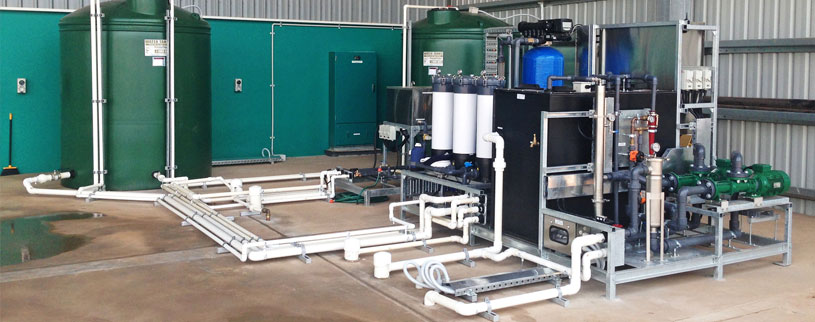
Invest in your business
Water recycling systems are a unique opportunity for both commercial and industrial businesses. Not only will this investment insulate your business from rising water prices and disposal fees, you can increase revenue by targeting environmentally conscience markets.

